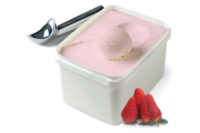Generic approaches to creating emulsifier/stabilizer blends for ice cream
The decision as to what, and how much, of any given emulsifier and stabilizer to apply depends on multiple factors.

We often comment as to whether frozen desserts actually need emulsifiers or stabilizers. After all, for many years, some of the most notable ice creams have been produced completely without the use of any added stabilization. Plus, frozen dessert mixes already have a minimum level of emulsification and stabilization via their naturally inherent content of phospholipids and milk proteins from the classical dairy ingredients used.
Yet often we prefer a higher level of stability, creaminess, shelf life, ease of processing and overall improved eating quality, which can be accomplished only by giving a little help to Mother Nature.
No easy decision
The decision as to what, and how much, of any given emulsifier and stabilizer to apply depends on multiple factors, including but not limited to the emulsifier’s role in fat agglomeration, whipping and overrun creation, as well as the stabilizer’s role in managing the behavior of the unfrozen water. Both directly influence the resistance to heat shock across distribution, points of sale and consumption, as well as desirable sensory qualities such as body (bite/chew), texture (smoothness/creaminess) and the amount and quality of overall flavor delivery.
Less obvious to the consumer are various protections from mix separation, protein destabilization due to thermal processing (e.g., ultra-high-temperature treatments), viscosity issues, extrusion stiffness, shape retention and resistance to shrinkage resulting from high-altitude distribution, to name a few.
Add to all the above the availability of multiple types, purities and seasonal variations of emulsifiers and stabilizers, many times adding near seeming identical functionalities yet yielding differing functional characteristics and overall sensory appeal. A good example is locust bean gum, with high susceptibility to global markets, and wide pricing fluctuations. Another example would be the change several years ago from emulsifiers with trans fats to those with a high degree of unsaturation. Thus, a manageable combination of functional needs in the form of standardized functional emulsifier/stabilizer blends boasts appeal.
Questions to ask, in no specific order of importance, include:
- What (and how much) needs to be managed? Fat? Water? Ice?
- What are the supply chain expectations, which include possible altitude changes, specifics of heat shock abuse and any considerations in support of international shipments?
- What are the specific functionalities desired in the final frozen dessert (e.g., “slow melt” functionality)?
- How is the final product to be positioned in the marketplace (e.g., “natural,” “organic,” “clean label” or other labeling declarations or considerations)?
- What is the desired texture and consistency of the ice cream exiting the freezer? For example, does it need to be soft for molded novelties or dry/stiff for extruded novelties? What is the proper flow (post flavoring) into cups, cones, retail and/or foodservice packaging? Care is necessary as situations may arise where consideration of any given ingredient’s “nonfunctionality in the final product” is needed. There are specific rules and guidance for such situations, which also involve the presence of any known allergen(s) and/or overall usage rate.
- What are the economics involved? This seems straightforward, but often emulsifier and stabilizer costs fluctuate widely, which not only affects final costs, but also may trigger a strategy of using multiple stabilizers interchangeably, depending on the market economics of each.
- What about convenience, accuracy and precision? Consider the convenience of using a functionally standardized (i.e., accurately conceived, precisely executed) blend of emulsifier/stabilizer for a range of mixes. Also, consider the potential of using a single package or blend per mix, given mix volume. While this might not be optimum, the increase in production efficiency, warehousing, pricing, etc., could make it worth it. And this may reduce mistakes in measuring individual components, taking into account any seasonal/lot variabilities and any particulate separation within the pack itself. Stabilizer pack consistency can be managed by the supplier. Particle size distribution, moisture content and avoidance of environmental conditions in storage detrimental to the product can help extend shelf life.
- What is the conventional wisdom? This involves matching past experience to current mix considerations and demands, as well as knowledge of the factory’s mechanical and process limitations.
- How much is too much? Use common sense: Too much of a good thing can be very, very bad!
When properly considered and formulated, blending of emulsifiers/stabilizers in any given context can make functional sense, protecting the integrity of the final food, as well as making financial “cents” for the manufacturer!
Looking for a reprint of this article?
From high-res PDFs to custom plaques, order your copy today!







